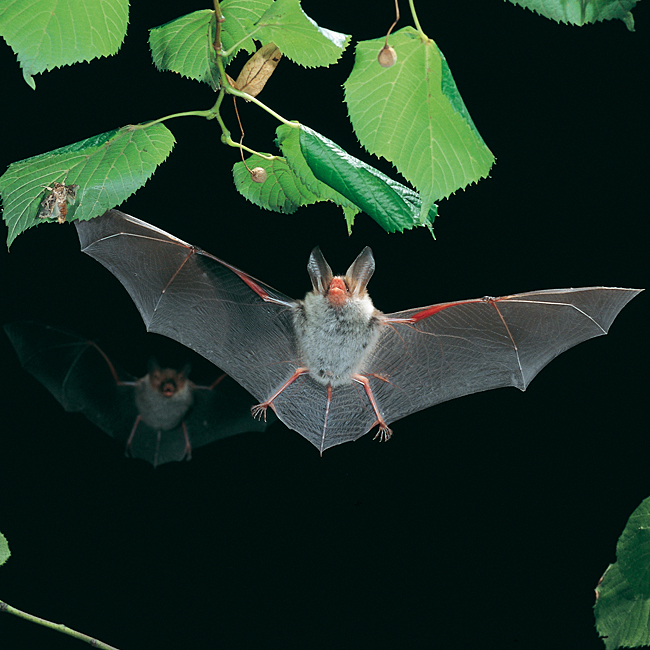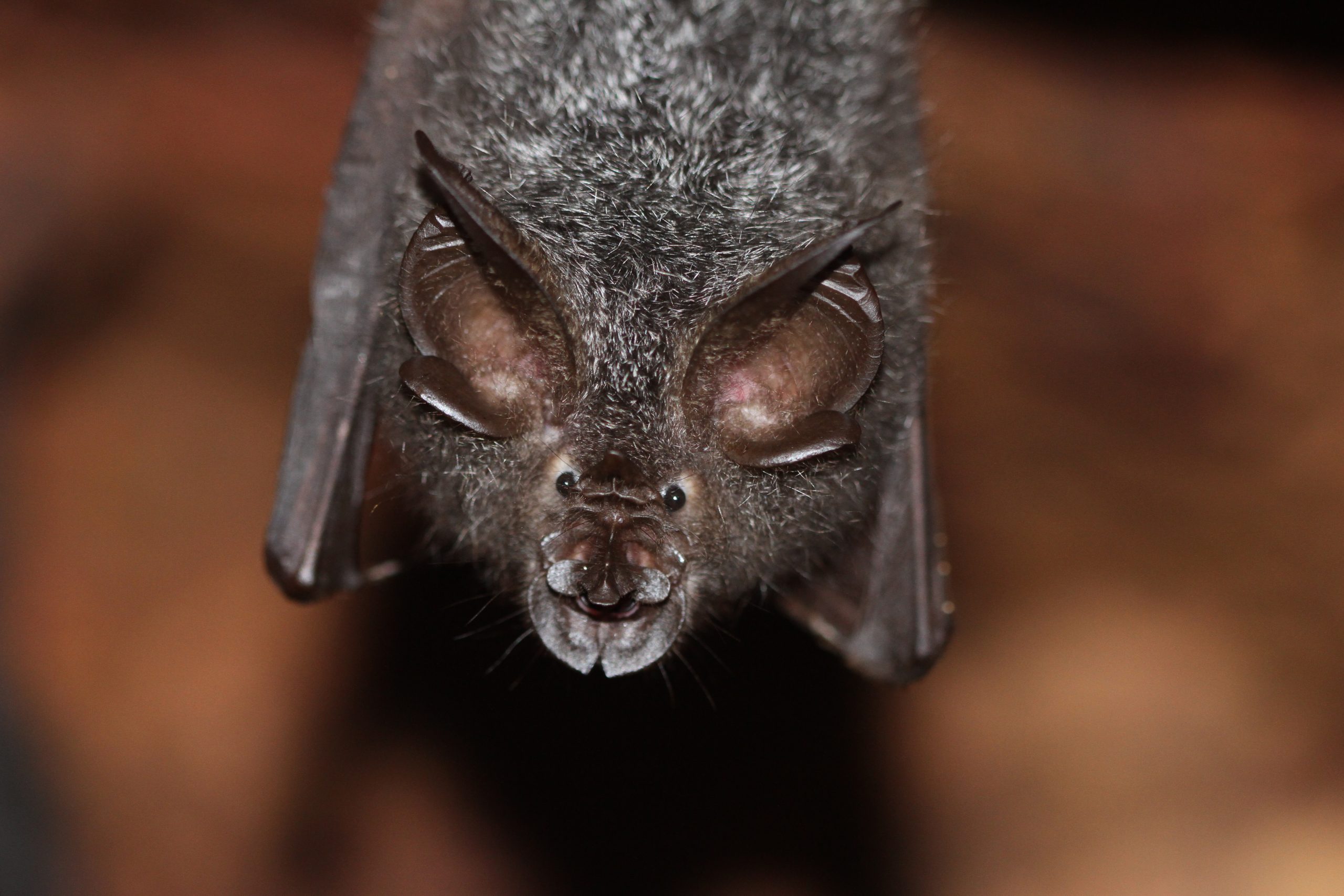Echolocation in Bats: Nature’s Sonar System
Have you heard some people say bats are blind?
Well, it’s a common misconception.
On the contrary, bats have excellent eyesight, and some bat species have even better vision than humans.
While their vision is well adapted to low light conditions, bats don’t solely rely on that to find food and navigate obstacles.
Instead, have evolved to have a special adaption called echolocation, something like a biological sonar system.
In this post, I’m going to bring you some interesting facts about echolocation in bats.
What is Echolocation?
Simply put, echolocation is how some animals, in this case bats, see with sound.
Now let’s put that into perspective.
Definition and basic concept
Echolocation is the process of sending out high-frequency sound signals and listening to the echoes that bounce back from objects in the environment.
Bats can figure out the distances, sizes, and movements of the things in their surroundings by sensing and interpreting these echoes.
This allows them to avoid obstacles in their flight paths and locate prey accurately.
How bats use echolocation
Bats make a variety of chirps and squeaks while flying and listen for echoes as the sounds get reflected by the objects in their surroundings.
The sounds hitting close objects will be reflected sooner and be louder than those striking more distant ones.
By interpreting these differences in timing and loudness, bats can determine the location, size, and even texture of those objects.
Comparison to other senses
While bats can see quite well even in low-light conditions, echolocation puts them at a distinct advantage in low-light environments.
It helps them to perceive their surroundings beyond visual information and detect even tiny prey in utter darkness.
The Mechanics of Bat Echolocation
Let’s move on to learning the mechanisms involved in this ability of bats. I wouldn’t delve deep into the physics of this, as it’s beyond the scope of this post.
Producing echolocation calls
Bats produce echolocation calls using their larynx.
Their larynx has special adaptations to generate these high-frequency sounds.
The bat larynx is large and reinforced with bone, allowing for high tension on their vocal cords.
So bats can produce intense, high-frequency sounds that we humans are not capable of hearing.
Most bats emit these calls through their mouth, but some species, like the horseshoe bats, use their nose which has a specialized nose leaf that helps focus and direct the sounds.
The frequency of bat echolocation calls typically ranges from 20 kHz to 200 kHz, varying widely between species.
For context, human hearing is only sensitive to frequencies from 20Hz to 20 kHz.
Some bats, like the short-eared trident bat, can produce calls as high as 212 kHz.
Receiving and processing echoes
Bats have highly adapted ears to receive the echoes of their calls. Many bat species have large, movable earflaps (pinnae) that help collect incoming sounds.
The inner ears are also specialized, with cochleas(structures that provide sound signals to the auditory nerve, the nerve that carries those signals to the brain) adapted for high-frequency hearing.
Once it receives the echoes, the bat’s brain processes this information incredibly fast.
The auditory cortex(the part of the brain responsible for interpreting sound signals coming in from the ears) of bats is highly developed, so it can quickly interpret complex echo patterns and create a detailed mental image of their surroundings.
Types of Echolocation Calls
Let’s take a brief look into the types of echolocation calls bats make.
Narrowband (Constant Frequency) Calls
Narrowband calls, or Constant Frequency (CF) calls, have a relatively stable frequency.
These calls are especially useful for detecting the movements of prey, as they allow bats to perceive tiny frequency changes caused by moving sound sources.
These frequency changes resulting from the movements of sound-emitting objects are called the Doppler effect in physics.
Broadband (Frequency Modulated) Calls
Broadband calls, or Frequency Modulated (FM) calls, shift through a range of frequencies in a short time.
The echoes of these calls tell details about the location and characteristics of objects in the environment.
They are particularly useful for navigation and locating unmoving objects.
Search, Approach, and Feeding Buzz calls
Bats use different types of calls for different purposes.
They send search calls regularly while flying to scan the environment.
Once they detect potential prey, bats switch to more rapidly emitted approach calls.
Finally, as they close in on their prey, bats produce a series of rapid calls known as a feeding buzz, which helps them pinpoint the location of the prey in the final moments before capture.
Echolocation Abilities and Limitations
Let’s look into this amazing ability of bats in some detail and its limitations.
Detecting prey and obstacles
The echolocation abilities of bats are remarkable.
They can detect objects as minute as human hair and recognize different types of insects according to the patterns they flap their wings.
Because of this, they can be very selective in their choice of prey and avoid hitting obstacles while flying through complex environments.
Range and Resolution
The effective range of bat echolocation is different for different species and environments.
Generally, bats can detect small insects within several meters, and larger objects from further away.
The resolution of bat echolocation, the clarity and details of the mental map they form of their surroundings by interpreting the echoes of their calls, are incredibly fine.
Doppler Shift Compensation
Due to the Doppler effect, the frequencies of bat calls can change as they fly.
The Doppler effect makes the frequency of the echo the bat hears higher than that of the call sent out by the bat.
Some bats, particularly horseshoe bats, have developed the ability to compensate for these frequency changes caused by their own movements.

This Doppler Shift Compensation (DSC) helps them to perceive their environment correctly even while flying fast.
How they do that is mind-blowing.
When these bats reach a target, they lower the frequency of their call so that the Doppler effect would not increase the frequency of the echo beyond the range they are sensitive to.
That’s called frequency adjustment.
Bats with Doppler shift compensation ability can also make small, step-wise adjustments to their call frequencies using the feedback from previous echos, an ability known as dynamic modulation.
Even more incredibly, bats like the horseshoe bat can adjust their call frequencies on par with their flight speed and the speed of sound, so the echoes they hear will be of a desired frequency even after being subjected to the Doppler effect.
Evolutionary Aspects of Bat Echolocation
Let’s move on to some evolutionary aspects of echolocation, both in bats and their prey.
Development in different bat species
The evolution of echolocation has been independent in different lineages of bats, leading to different species having different echolocation strategies.
While most microbats (insectivorous bats) make echolocation calls using their larynx, some megabats (fruit bats) have developed the ability to make the calls with tongue clicks.
Adaptations in Prey
The echolocation ability of bats has also led to some of their prey developing adaptations to protect themselves against it.
For example, some moths have developed the ability to hear bat calls and evade to safety.
Some have acquired furry wings that absorb sound, so the bat calls don’t bounce off them.
Studying Bat Echolocation
So how do scientists study the echolocation calls of bats?
Recording and analyzing bat calls
Scientists use specialized microphones to record their ultrasonic calls and then analyze the spectrograms of these recordings.
This helps researchers identify different bat species according to the characteristics of their calls and study their behavior.
Use of Bat Detectors
Bat detectors are devices that convert bat echolocation calls into sounds the human ear is sensitive to.
These tools are useful for both scientists and amateur bat enthusiasts, as they allow them to unveil the hidden world of bat calls.
Applications in research and conservation
Studying bat echolocation plays an important role in their conservation.
Monitoring bat calls helps researchers assess bat population health, track migration patterns, and identify important habitats.
This information is crucial for developing strategies to conserve these ecologically important animals effectively.
Conclusion
Bats use a kind of biological sonar system called echolocation to find prey and navigate their surroundings.
This involves sending high-frequency sound signals and interpreting their echoes to determine the distances, sizes, and movements of their prey and obstacles in their environment at night.
They produce these sounds with their specialized larynx receive their echos with their sufficiently sensitive ears, and use their brain’s specially adapted auditory cortex to quickly process the received echos to create a detailed mental map of their environment.
Different types of bat calls serve different purposes, and the evolution of echolocation has led to various strategies among different bat species and defensive adaptations in some of their prey.
Scientists study bat echolocation using specialized microphones and bat detectors for monitoring populations, identifying important habitats, and using that information to plan conservation attempts.







